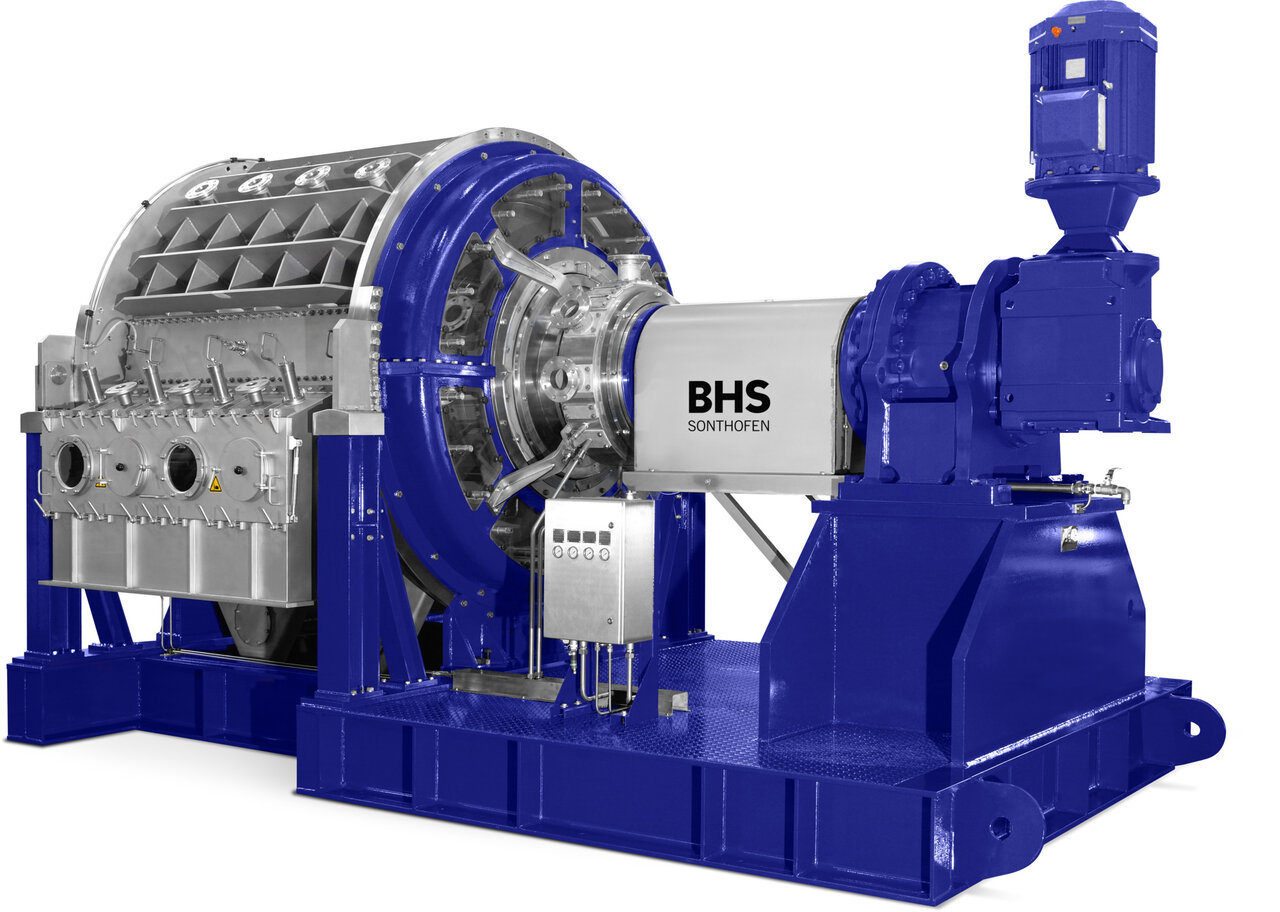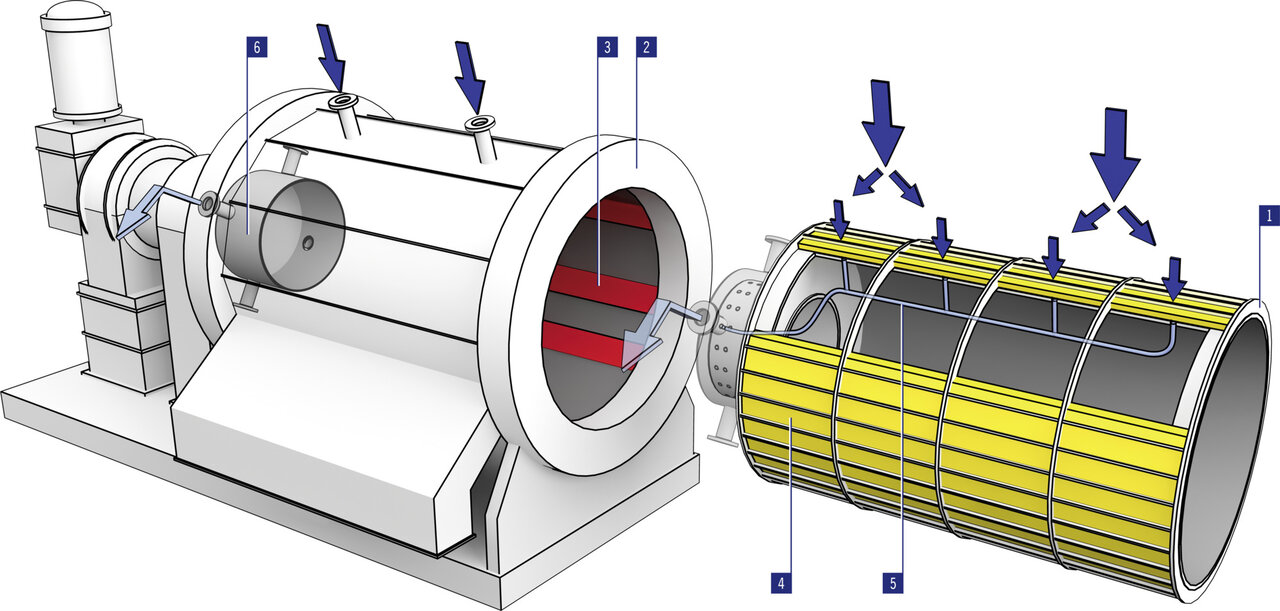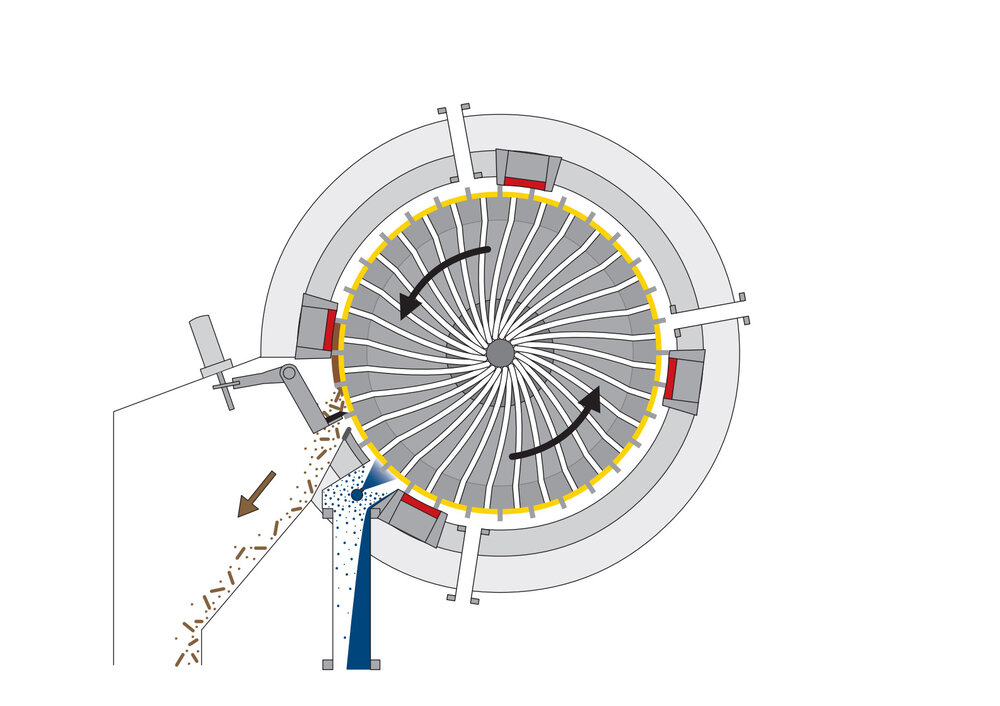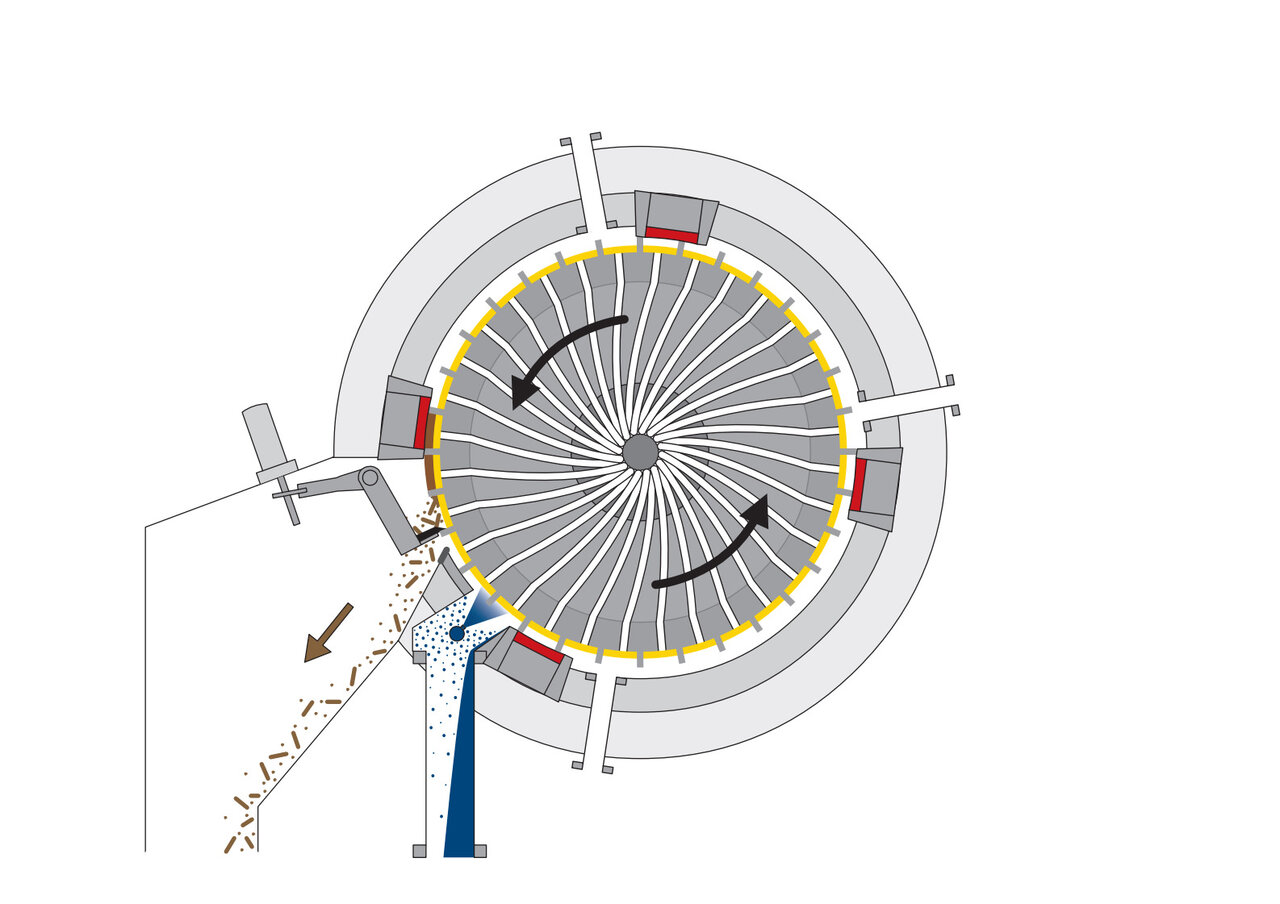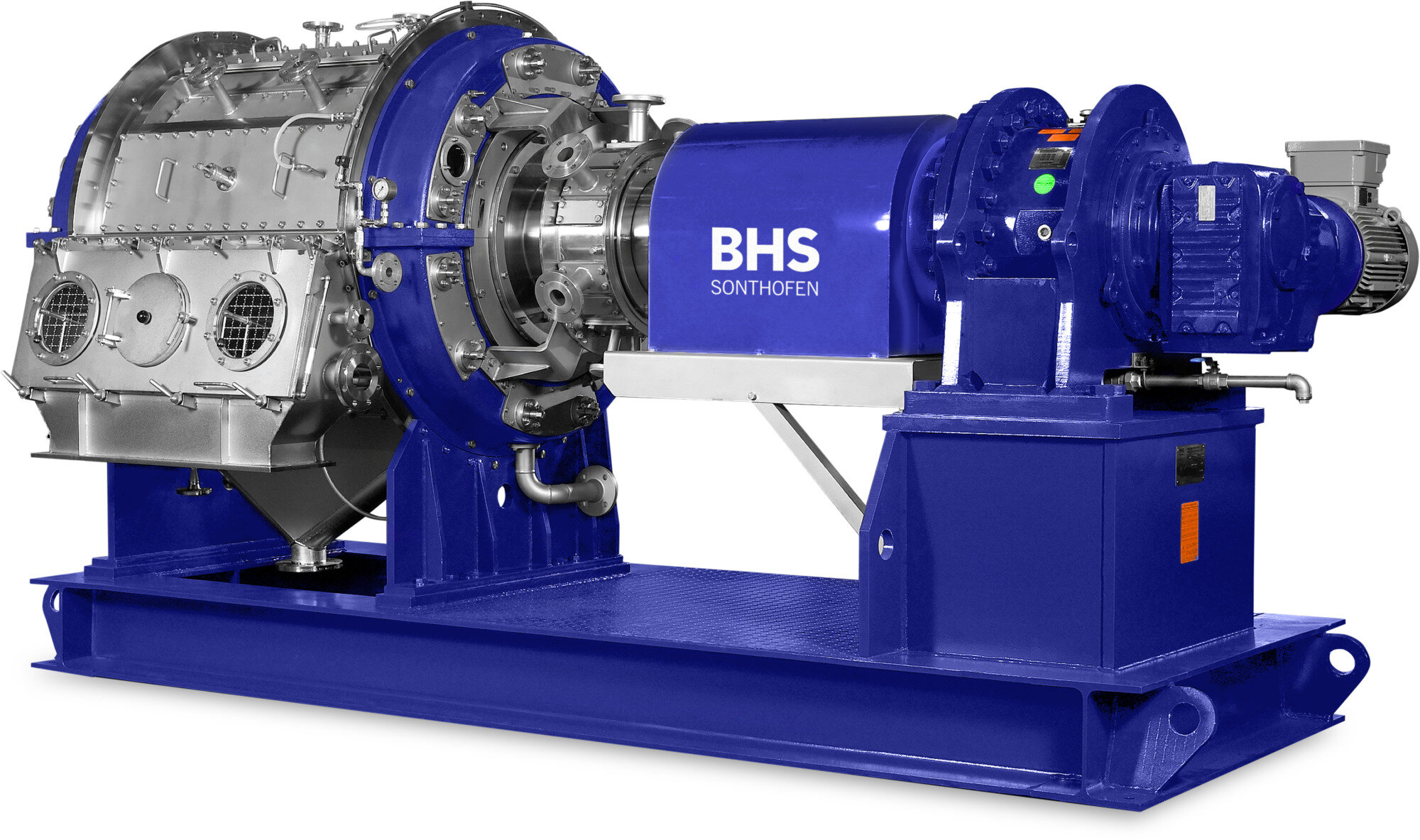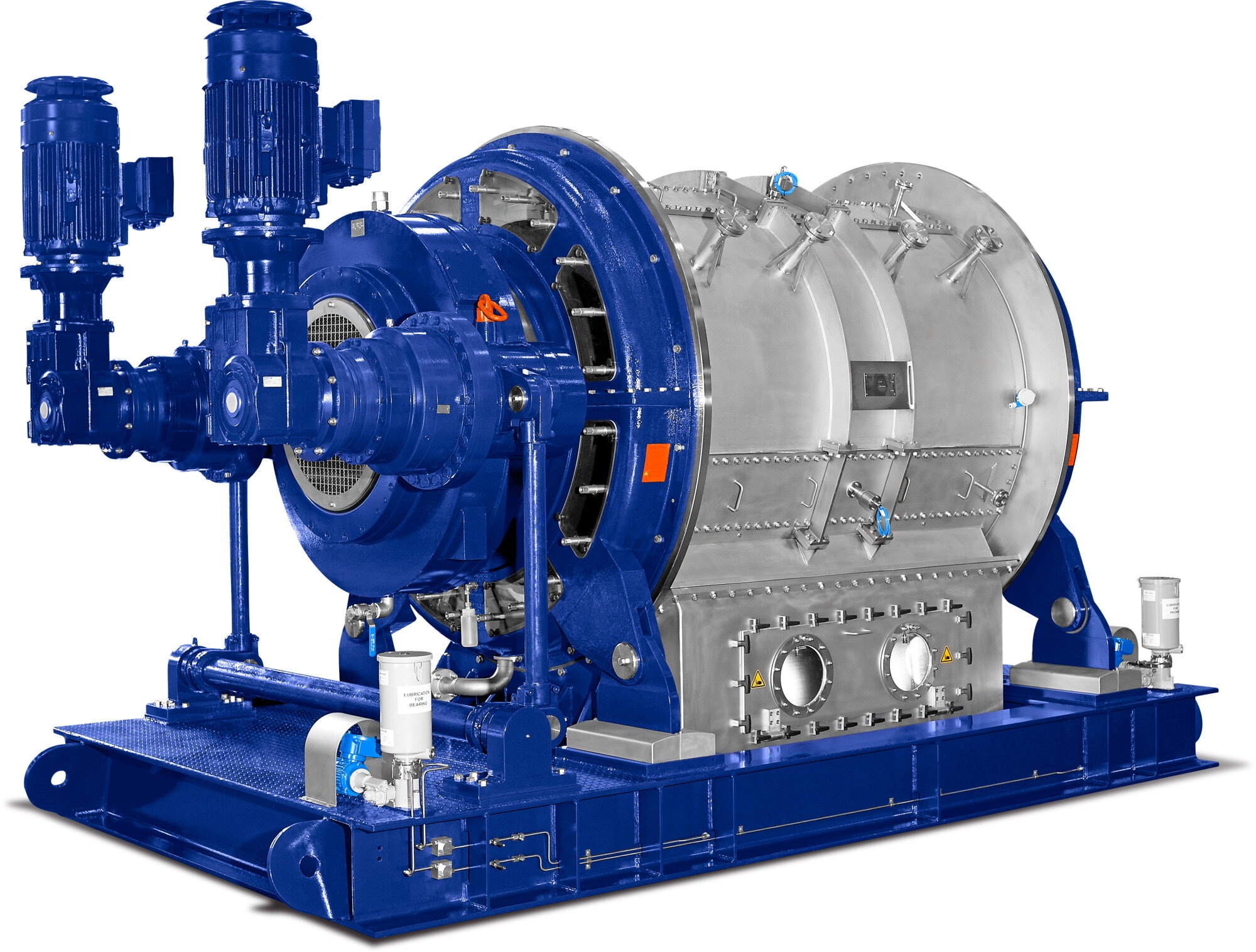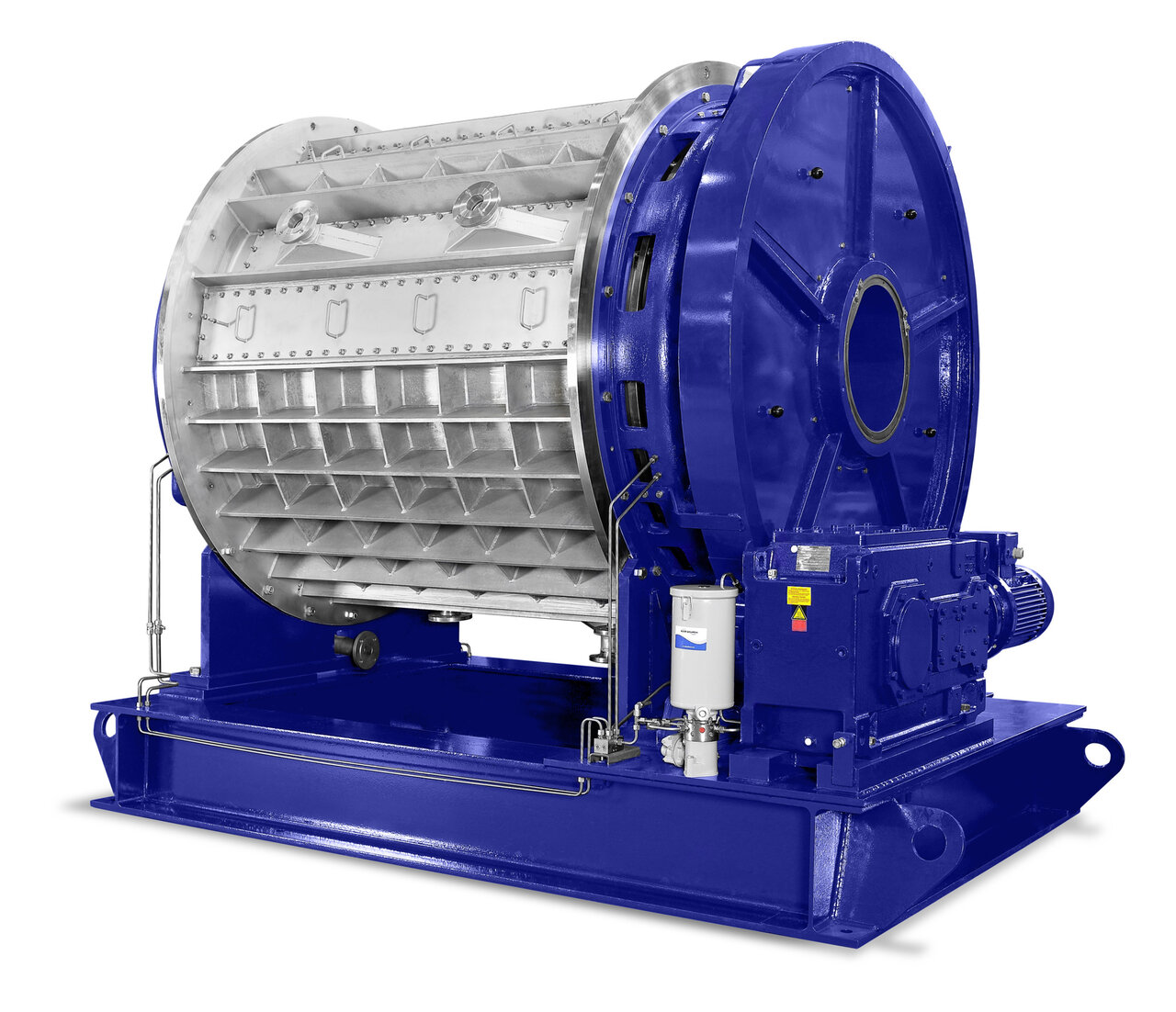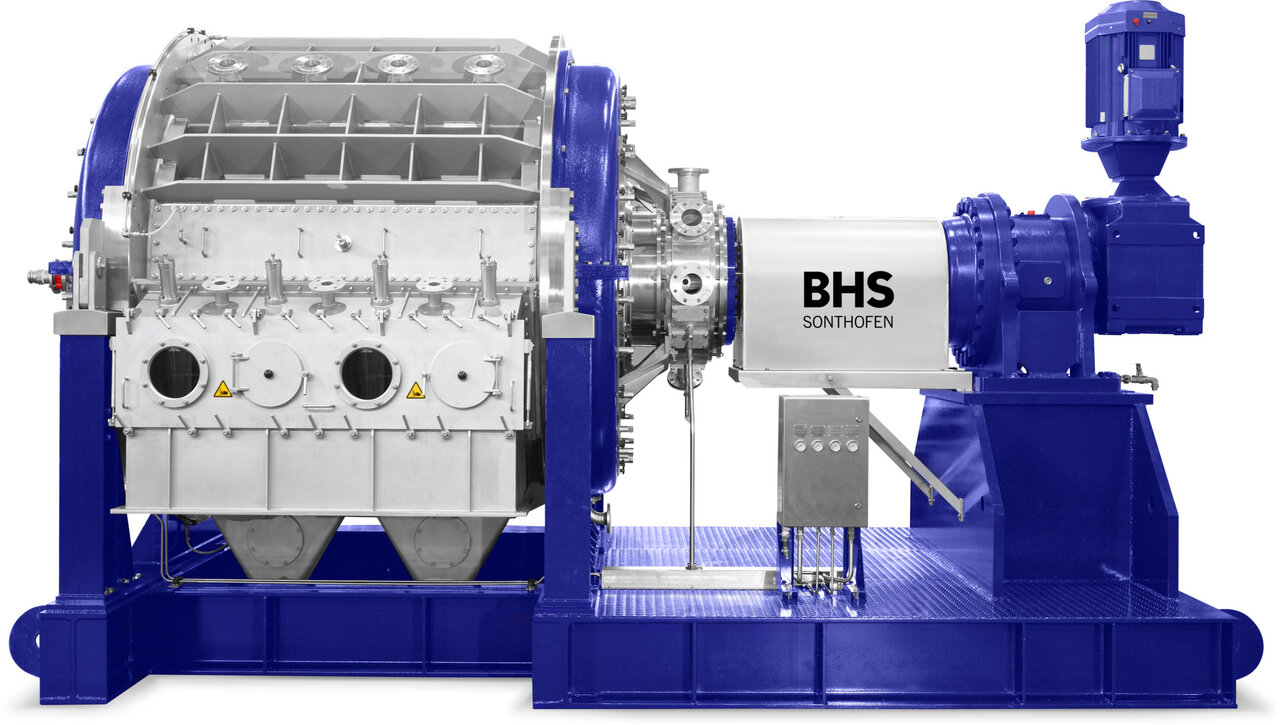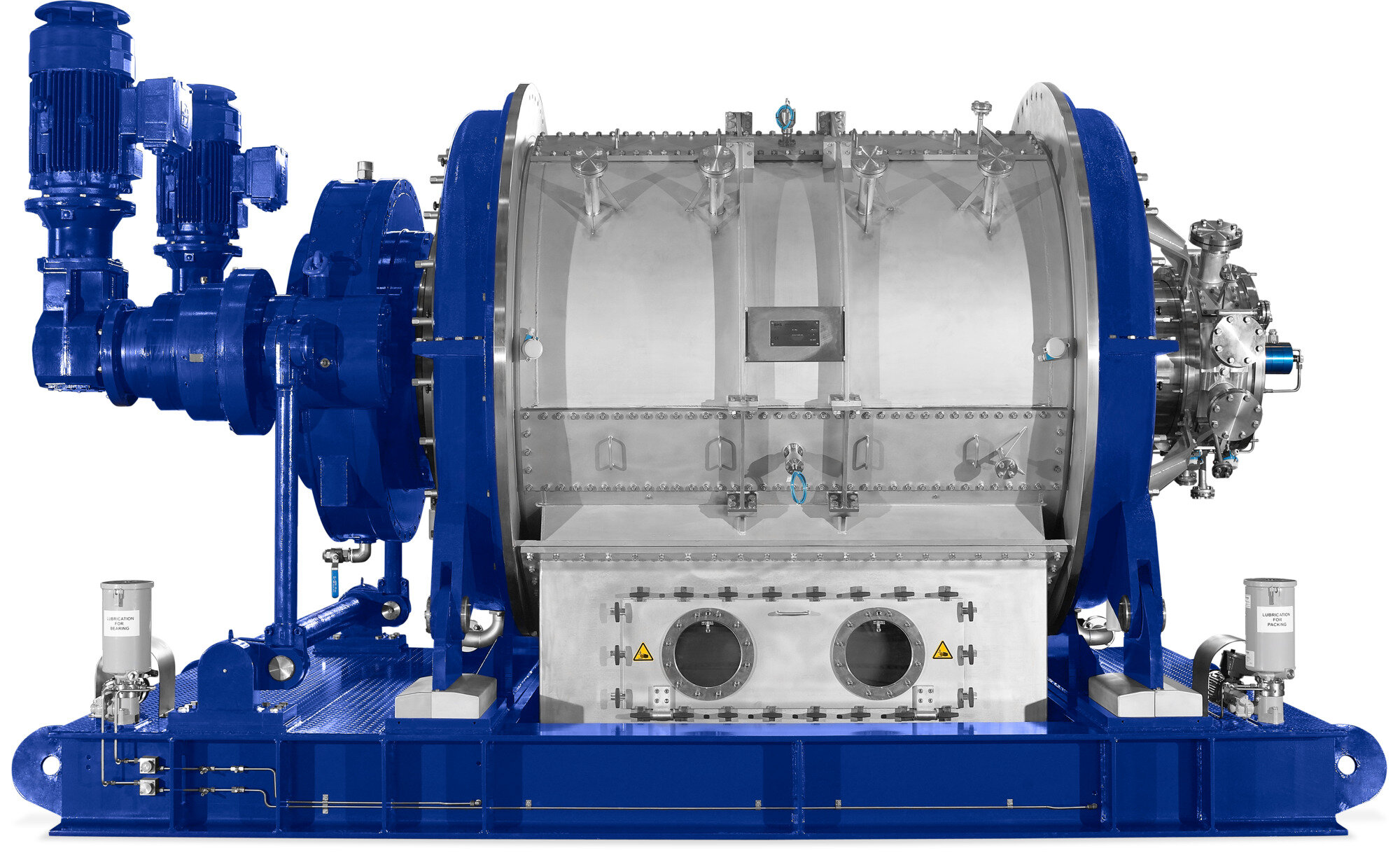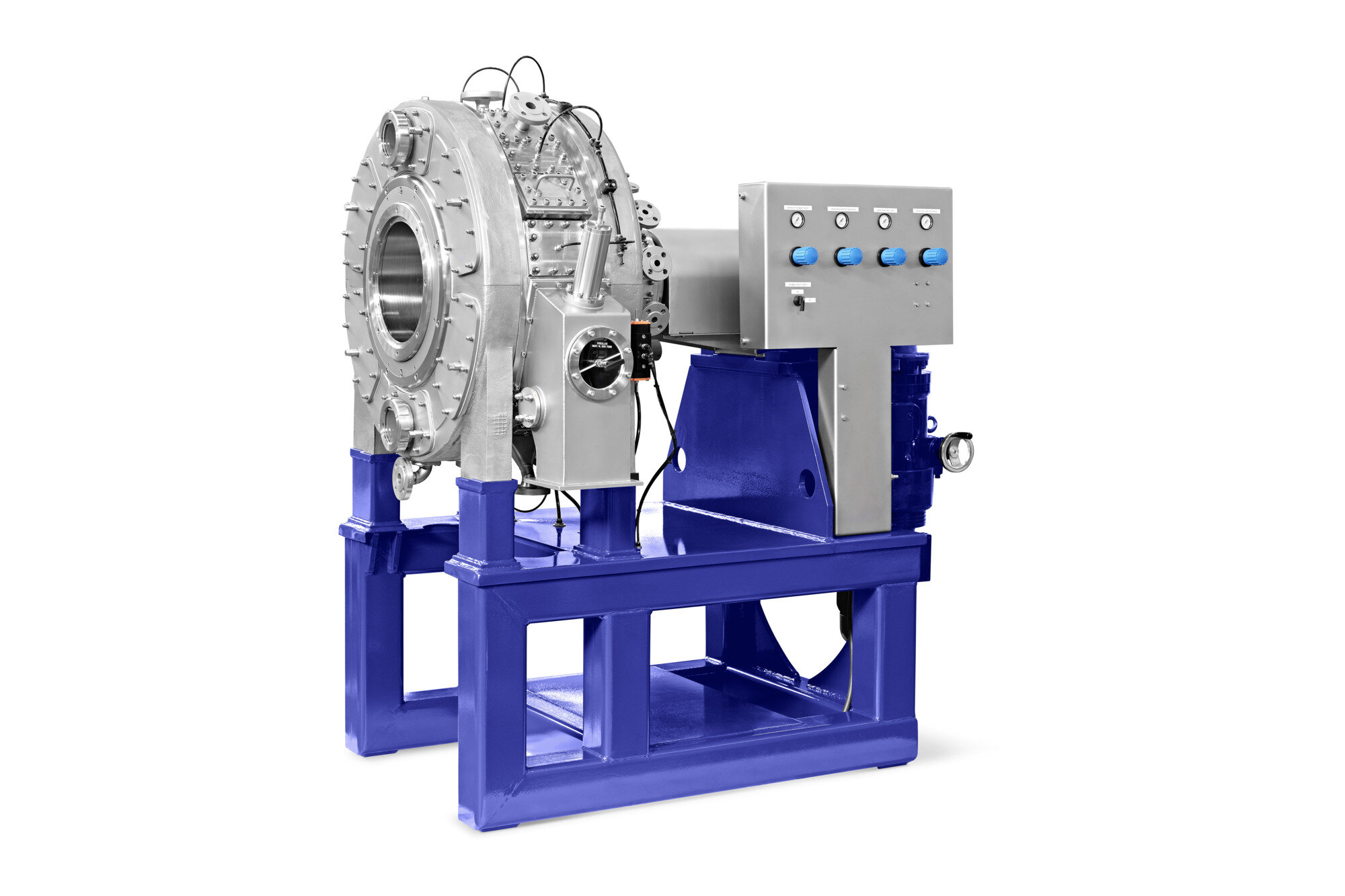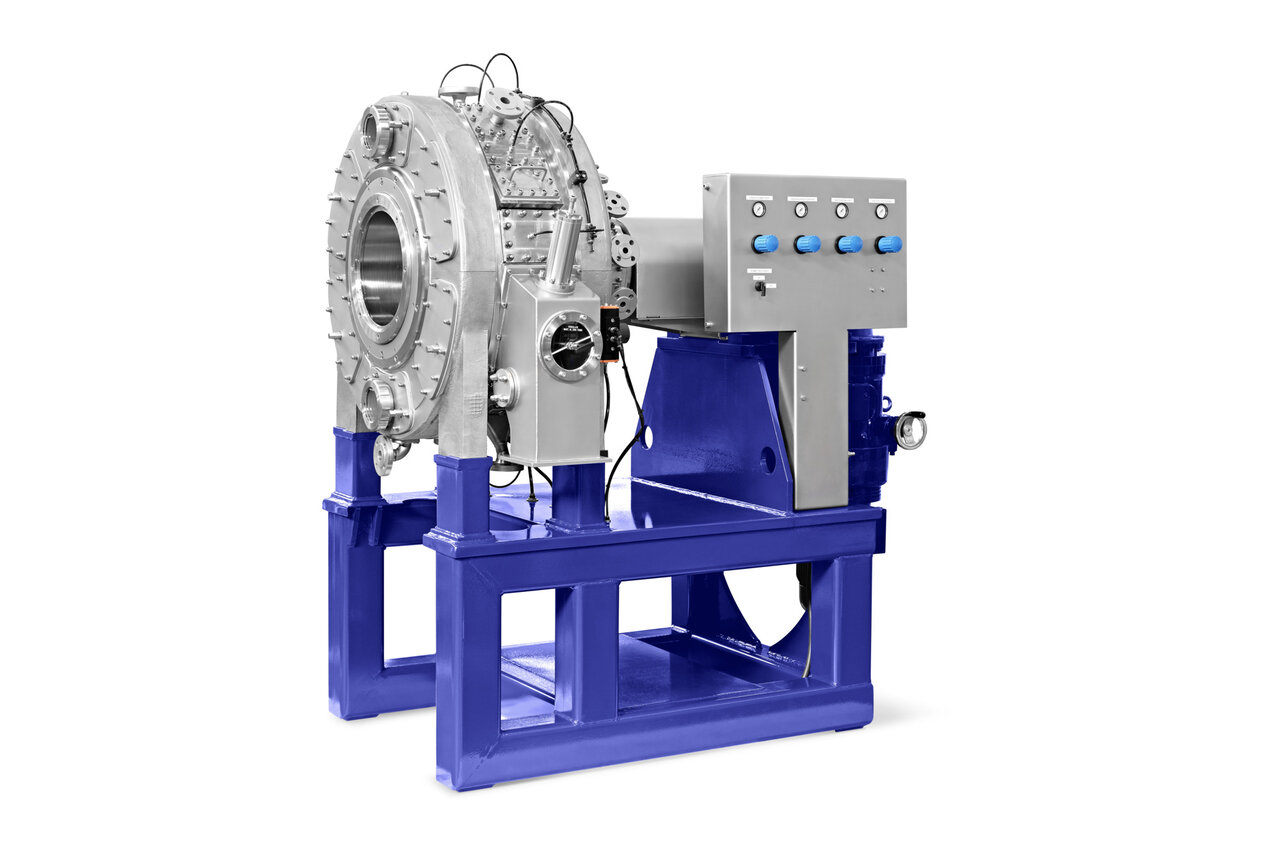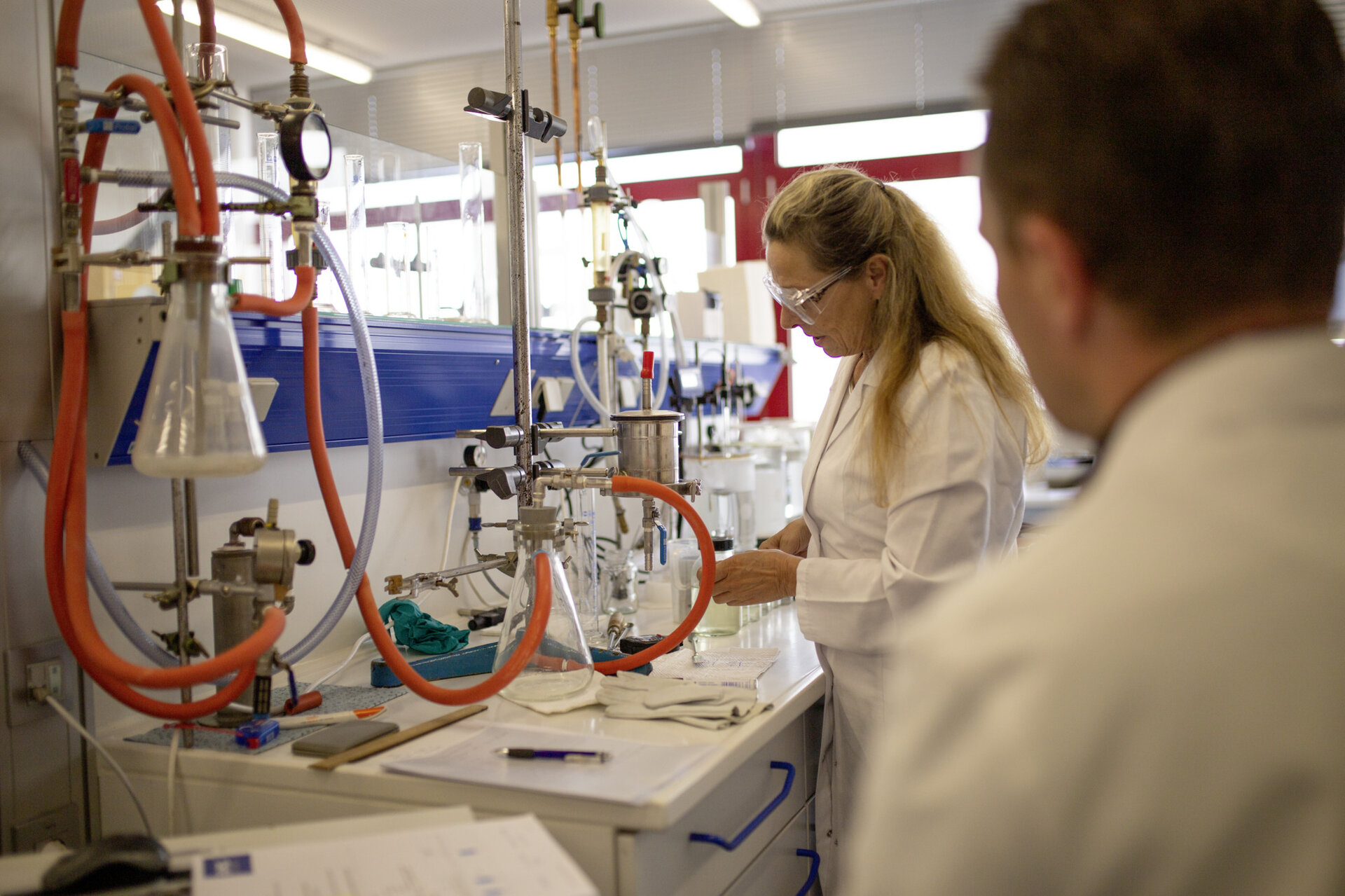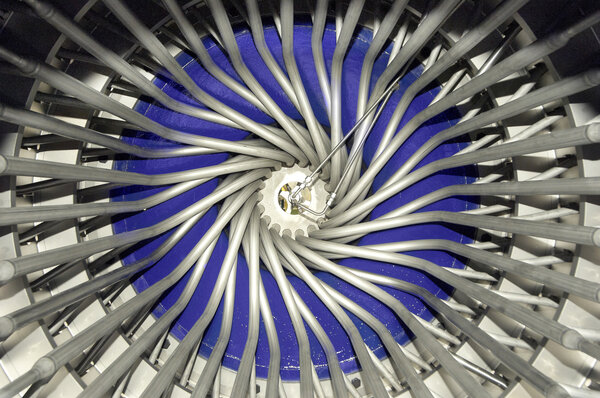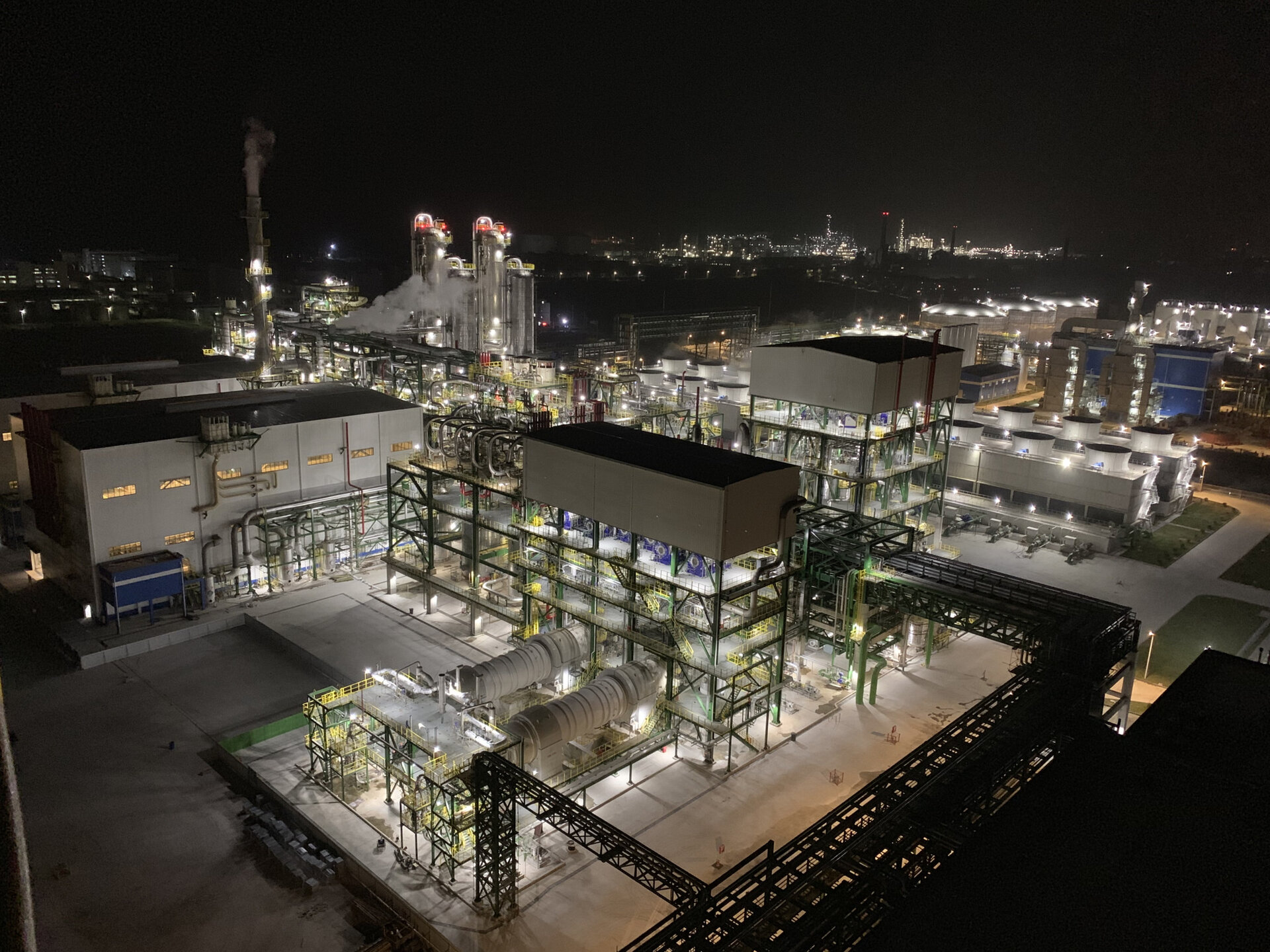
Rotary pressure filter
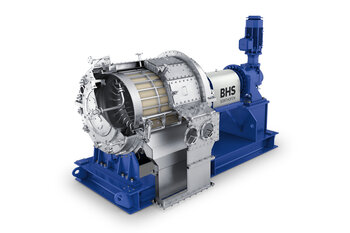
Highly efficient pressure filtration and cake washing
The BHS rotary pressure filter (type RPF) is a continuously operating filter for pressure filtration. It facilitates gas-tight cake handling in a series of separate process steps. Cake treatment can, for instance, comprise single- or multi-stage cake washing and subsequent cake drying. Cake discharge can take place at atmospheric pressure. Application scenarios cover a wide range of industries, including industrial chemicals, fine chemicals, the pharmaceutical industry and the food industry.
Production of high-quality pearlescent pigments with the rotary pressure filter (RPF)
Production of high-quality pearlescent pigments with the rotary pressure filter (RPF)
BHS-Sonthofen rotary pressure filters have proven themselves in many applications. For example, Merck uses them around the clock to produce pearlescent pigments. Watch the video to find out how BHS filtration solutions give cars and cosmetics a shiny appearance.
Highlights
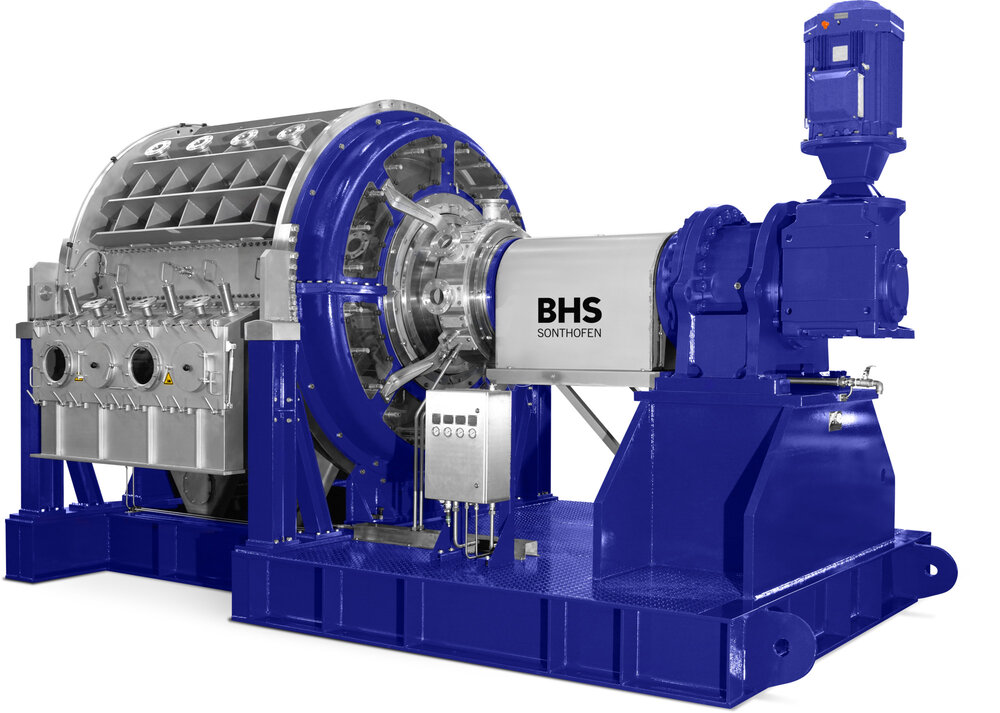
Versatile technology solutions
The rotary pressure filter supports a broad range of process steps during a single rotation of the drum. After separating the suspension into filtrate and filter cake, the rotary pressure filter supports the following additional processes: single- or multi-stage cake washing, displacement washing, counter-current washing, circulation washing, slurrying, solvent exchange, steaming, extraction, as well as mechanical or thermal cake dehumidification. All process steps take place in separate segment zones within the filter. This makes it possible to separately discharge the filtrates or other substances.
Closed, gas-tight method of operation
The rotary pressure filter is a fully encapsulated unit that can be integrated into production processes in a gas-tight manner. This means that the rotary pressure filter is also suitable for use in operating scenarios with increased safety or hygienic requirements.
Variable process pressures and temperatures
The rotary pressure filter operates at a pressure of up to 7 bar (g) and within a temperature range of approx. -20° to approx. 160° Celsius. During all process steps, pressure is generated hydraulically via the inlet pipes for the suspension or washing/extraction media rather than pneumatically by means of gas stratification. This enables the procedural optimization of each individual process step.
Cake discharge at atmospheric pressure
Each process step is sealed off into a segment zone by means of pressure-tight separation elements inside of the rotary pressure filter. The cake can be discharged to the surrounding area at atmospheric pressure.
Materials
We utilize different stainless steel grades as required by the specific application scenario. We employ high-quality sealing materials and advanced plastics suitable for each application.
ATEX
We are ATEX certified. We produce special-purpose filters for applications in the pharmaceutical, food and bioprocess industries.
Technical systems
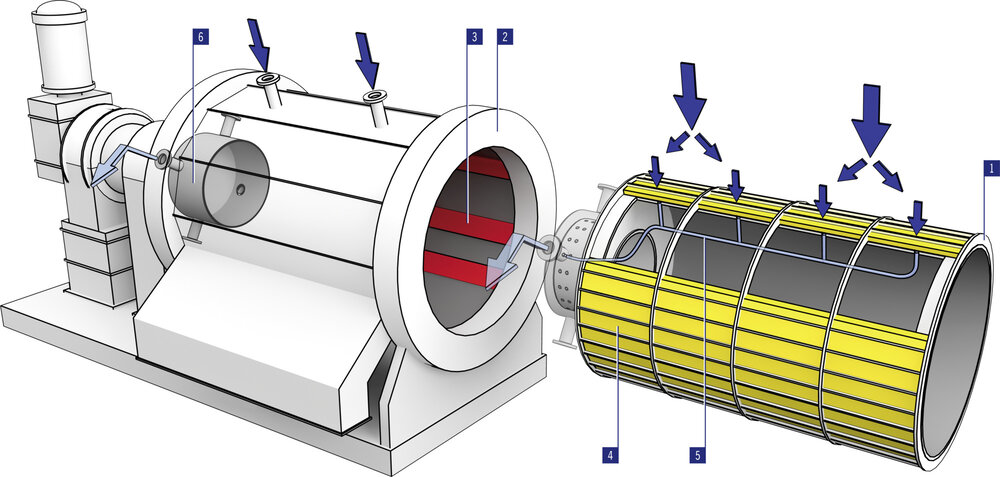
The filter drum [1] rotates continuously in a pressure-tight housing [2] at a freely configurable speed. The intermediate circular space is laterally sealed using special gland seals and divided in the longitudinal direction into multiple pressure-tight segment zones using separation elements [3]. The drum surface consists of filter cells [4] that are connected to the control head [6] via drain pipes [5].
Suspension infeed & filtration

Suspension infeed & filtration
The suspension is fed into the filter continuously and under pressure. The filter cake is formed on the filter elements located in the filter cells; the drum rotation transports this cake to the subsequent segment zones. The filtrate is drained from the cells towards the control head via the pipe system.
Cake washing

Cake washing
Depending on the application, the cake is washed, extracted or steamed in a single- or multi-stage process. As the segment zones are completely filled, this results in an ideal single-phase displacement flow through the cake. The washing fluid is drained to the control head via the pipe system and can be collected there in an unmixed state.
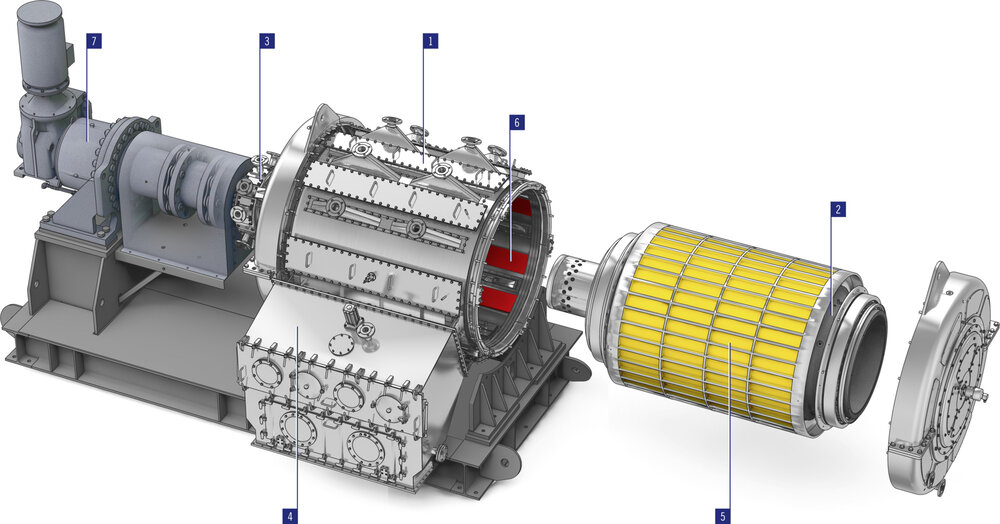
[1] Housing
The separation elements divide the housing into segment zones. The suspension, or the media to be treated, is fed from the outside to the corresponding segment zones under pressure. The standard operating pressure is 3 bar (g) and up to 7 bar (g) for high-performance filters.
[2] Drum
Separator bars and drum rings subdivide the drum surface into box-shaped cells, which serve to hold the filter cake. The cells contain the cell inlays, which are covered with the filter medium and screwed to the drum. Operators can configure the cake thickness to optimize the process. The maximum cake thickness is 175 mm.
[3] Control head
The control head is where the respective filtrates are separately drained. The head also controls blowback for cake discharge and cloth cleaning. The control head consists of a core that is permanently fastened to the drum. The filtrate pipes end here. A ring space is located between the rotating core and the rigid control head housing; isolating plugs subdivide this space into segment zones that correspond to the process zones at the filter. This allows the collected filtrates and treatment media to be drained independently of each other.
[4] Cake chute
The cake is discharged in a non-pressurized filter zone via air, steam or nitrogen blowback. An autonomously operating scratcher supports cake discharge where necessary. If required, this zone can also be equipped with a gas-tight sealing hood. After cake discharge, a cleaning mechanism takes care of continuous or on-demand filter cloth cleaning.
[5] Cell inlays in the drum
The filter cell contains the cell inlays, which constitute the actual filter element. The cell inlays separate solid matter from the suspension. They are connected to the drum via screws on the filter elements. The inlays comprise the filtrate discharge mechanism, support tissue and filter cloth. Depending on the application, the filter cloth is a plastic or metal mesh.
[6] Separation elements
Separation elements pneumatically pressed against the drum reliably separate the individual segment zones from one another in a pressure-tight manner. High-end, chemically resistant plastics, such as, for instance, PE or PEEK, reliably implement the sealing effect. The exchangeable sealing plates are fastened to inherently stable support beams.
The filter has a freely adjustable drive to accommodate different throughputs and filtrate characteristics. The drive comprises a reduction gear unit, a coupling (where included), and a frequency-controlled drive motor. Three drive versions are available:
Designs
Spur-gear filter
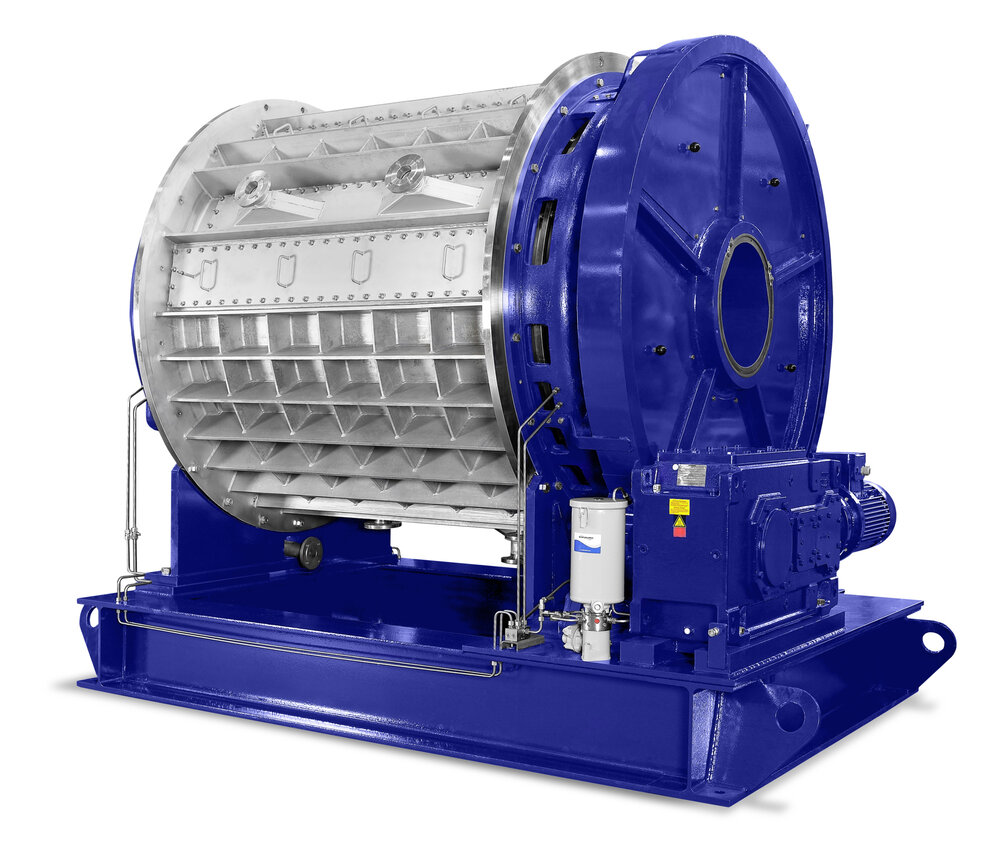
Spur-gear filter
Spur-gear filters are generally designed for suspension processing in continuous operation with a throughput of up to 25 m³/h and cake thicknesses of up to 30 mm. The operating pressure is up to 3 bar (g).
Rotary pressure filter with secondary containment
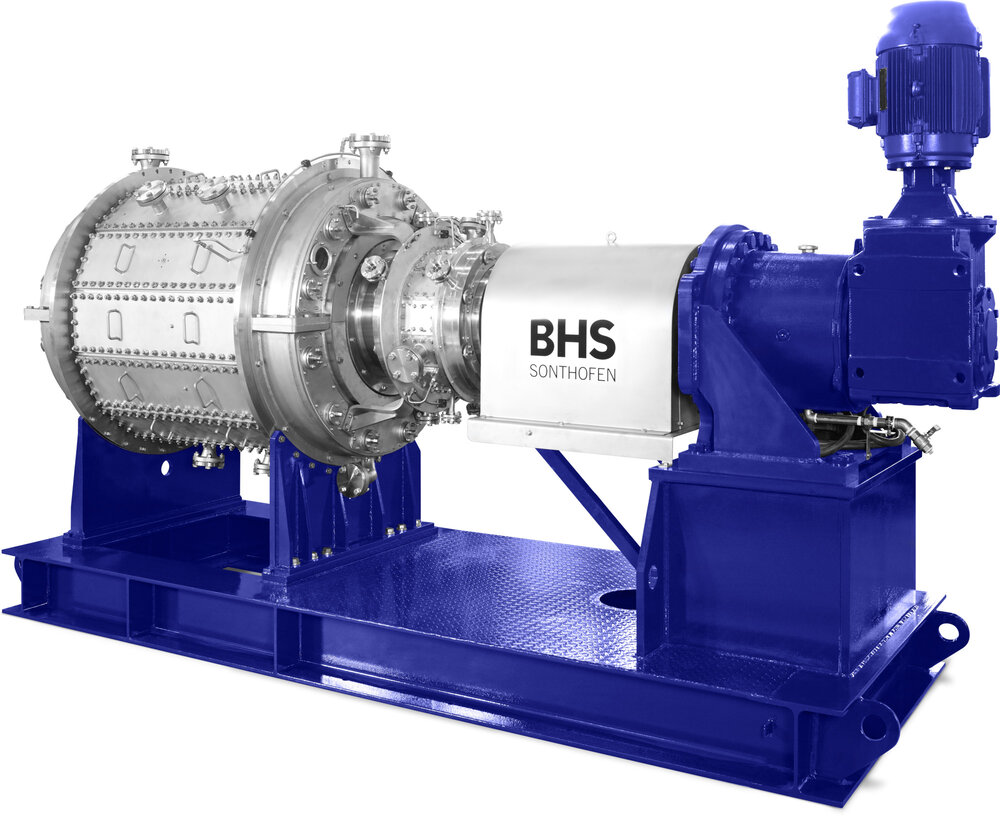
Rotary pressure filter with secondary containment
An additional, pressure-tight sealing that separates the processing space from the surrounding area – the so-called secondary containment – improves the safety of the rotary pressure filter in the event of a leak in the primary sealing. Any leaking fluids and/or gases are detected and extracted in the second sealing space on the housing and control head, thus preventing contamination of the environment through highly toxic and/or volatile media.
High-performance filter

High-performance filter
In continuous operation, high-performance filters can handle a suspension throughput of up to 250 m³/h, cake thicknesses of up to 175 mm, as well as operating pressures of up to 7 bar (g) and a pressure-tight filtrate discharge at up to 6 bar (g).
Nitrogen recirculation system
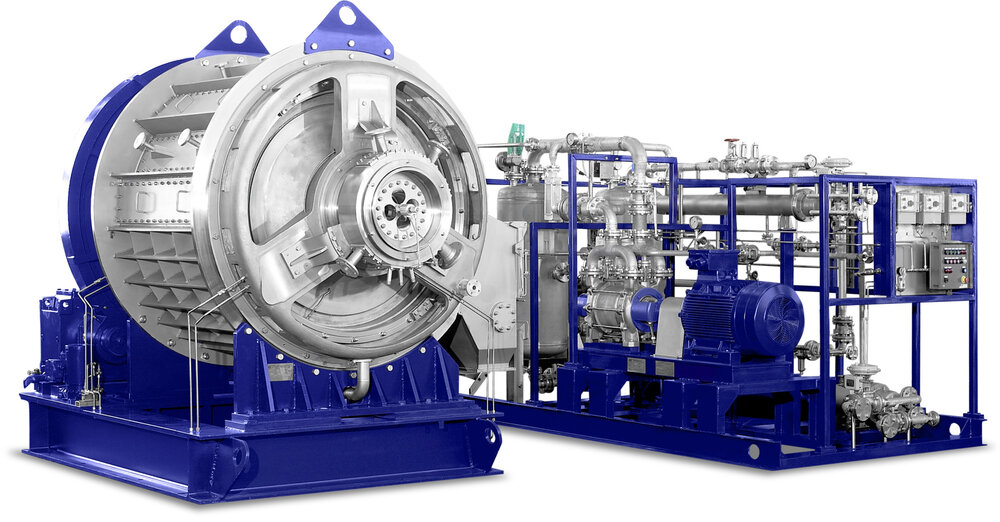
Nitrogen recirculation system
The BHS recirculation system makes it possible to reuse the nitrogen accumulated during inert processes. The system separates the nitrogen required for drying and discharging the filter cake from the entrained solvent and condenses it to the necessary process pressure. Dual systems for supplying two or more rotary pressure filters are also offered on demand. This significantly reduces the overall nitrogen consumption.
Technical specifications
Performance Data, Dimensions, and Weights
TYPE | DRUM DIAMETER | EFFECTIVE DRUM LENGTH | ACTIVE FILTER AREA | DIMANSIONS (L x B x H) | WEIGHT |
|---|---|---|---|---|---|
| RPF P01 | 0,75 m | 0,1 m | 0,18 m² | 2 x 1,2 x 2m | 2.500 kg |
| RPF P02 | 0,75 m | 0,25 m | 0,45 m² | 2,1 x 1,2 x 2 m | 3.500 kg |
| RPF A03 | 1 m | 0,3 m | 0,72 m² | 3,9 x 2,1 x 2,2 m | 7.000 kg |
| RPF A06 | 1 m | 0,6 m | 1,44 m² | 4,2 x 2,1 x 2,2 m | 10.000 kg |
| RPF A09 | 1 m | 0,9 m | 2,16 m² | 4,5 x 2,1 x 2,2 m | 13.000 kg |
| RPF A12 | 1 m | 1,2 m | 2,88 m² | 4,8 x 2,1 x 2,2 m | 15.000 kg |
| RPF B09 | 1,5 m | 0,9 m | 3,2 m² | 5 x 2,9 x 3,2 m | 20.000 kg |
| RPF B12 | 1,5 m | 1,2 m | 4,3 m² | 5,4 x 3 x 3,2 m | 30.000 kg |
| RPF B16 | 1,5 m | 1,6 m | 5,8 m² | 5,8 x 3 x 3,2 m | 35.000 kg |
| RPF X16 | 1,8 m | 1,6 m | 6,9 m² | 5,8 x 3,3 x 3,6 m | 40.000 kg |
| RPF X20 | 1,8 m | 2 m | 8,6 m² | 6,2 x 3,3 x 3,6 m | 42.000 kg |
All specifications apply to a high-performance filter with Center Drive. The shown dimensions an geihts are approximate figures.
The technical data for other designs may vary from the information shown here.
All technical data may change due to development.
Subject to modification without notice.
Operating criteria
| Operating method | continuous |
|---|---|
| Operating pressure | up to 6 bar (g) |
| Operating temperature | up to 160° C |
| Soldids content (suspension) | up to 60 % (by weight) |
| Cake thickness | up to 175 mm |
| Grain size | 10 - 500 µm |
| Filter output – suspension | up to 30 m³/m² h |
| Filter output – dry solids | up to 15.000 kg/m² h |
| Active filter surface | 0,18 - 8,6 m² |
